Table of Contents
The Sri Lankan flag, also known as the flag of Sri Lanka, holds a significant place in the nation’s history and culture. With its vibrant colors and meaningful symbolism, it represents the Sri Lankan identity and heritage. In this article, we will delve into the intriguing aspects of the Sri Lanka flag, its design, historical background, and the symbolism behind its elements.
The Sri Lanka flag features a vibrant design with various symbols and colors. The central features and colors symbolize distinct aspects of the nation’s history and culture, reflecting its diverse heritage.
Sri Lanka Flag: Colors and Symbolism
- The flag of Sri Lanka features a unique design with multiple symbols and colors.
- Each color and symbol holds specific meanings, reflecting the history, sacrifices, and aspirations of the Sri Lankan people.
- The elements in the flag also represent the country’s diverse landscapes, traditions, and the unity among the Sri Lankan people.
- The flag’s design reflects the nation’s aspirations, cultural heritage, and unity among the people of Sri Lanka.
Flag of Sri Lanka
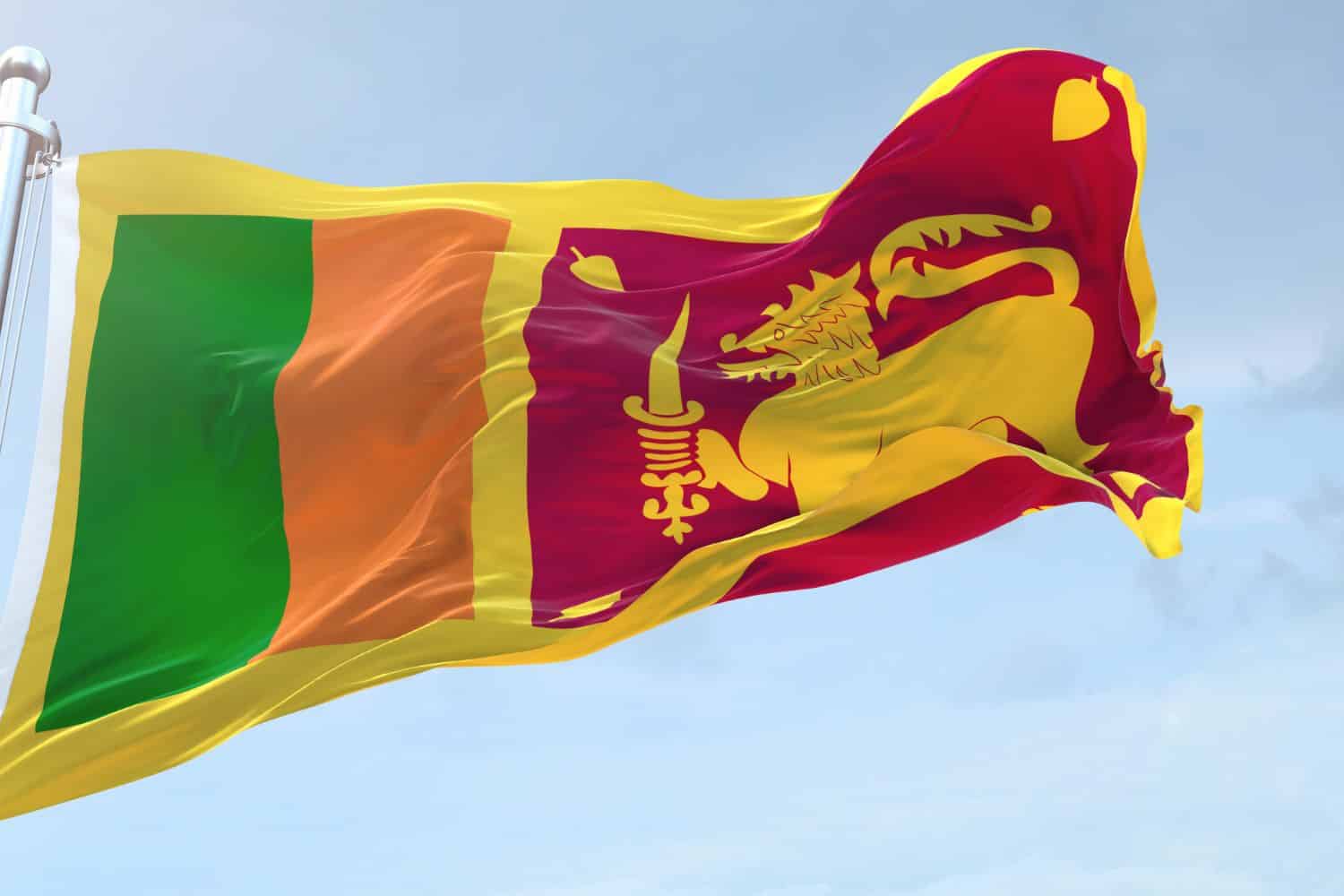
The flag stands as a powerful emblem that encapsulates the rich history and cultural significance of Sri Lanka. Its design showcases a maroon background with a golden lion holding a sword, surrounded by four golden bo leaves in each corner. There are also green and orange vertical stripes on the left side. The lion symbolizes bravery and the strength of the nation, while the sword signifies the nation’s sovereignty. The green stripe represents Sri Lanka’s Muslim community and the orange stripe symbolizes the Hindu Tamil community. The golden bo leaves stand for the four virtues of kindness, friendliness, happiness, and equanimity.
The history of the flag is deeply embedded in Sri Lanka’s rich heritage and its journey to freedom. Adopted in its current form on March 2, 1951, the flag represents the unity and aspirations of the Sri Lankan people.
Beyond its aesthetics, the flag from Sri Lanka carries profound symbolic meanings. The colors and symbols reflect the values and aspirations of the Sri Lankan people, epitomizing bravery, unity, and cultural diversity. The lion, holding the sword, showcases the nation’s resilience and pride, whereas the bo leaves represent the virtues the nation holds dear.
National Flag Etiquette and Protocol
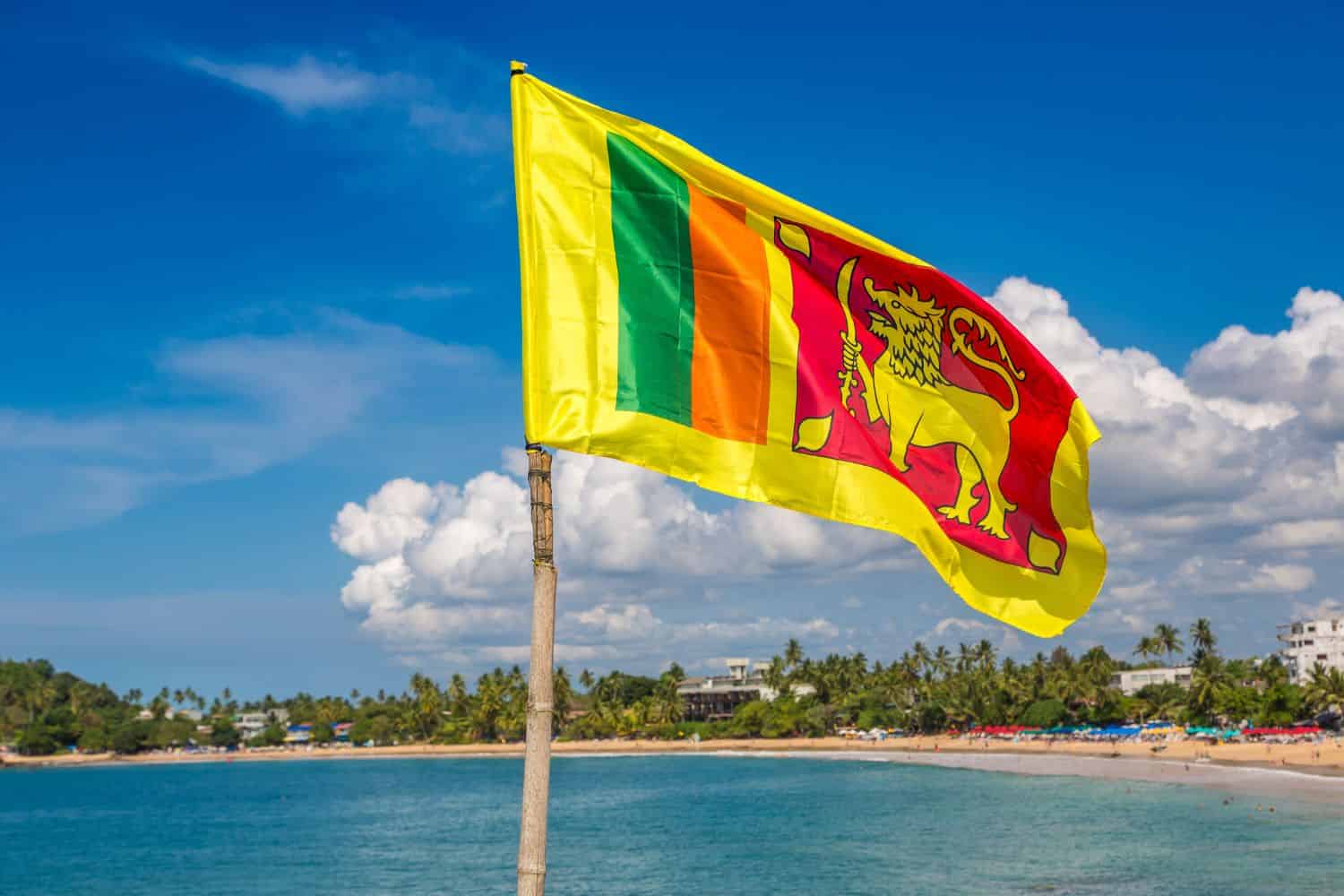
Respecting the proper usage and display of the Sri Lankan flag is paramount. Understanding flag etiquette is crucial, especially during national events and ceremonies. Familiarize yourself with the rules governing the handling, hoisting, and lowering of the flag. Know the appropriate measures for retiring or handling damaged flags, ensuring they receive the respect they merit.
- Proper Handling: The Sri Lankan flag should be handled with care and reverence, ensuring it never touches the ground or floor. It should be held upright and never dragged.
- Hoisting and Lowering: When hoisting the flag, it should be raised swiftly and lowered with dignity. Typically, the flag is hoisted at dawn and lowered at dusk, though this can differ based on the event or specific guidelines.
- Displaying the Flag: The Sri Lankan flag should be displayed with the lion and sword clearly visible and the stripes on the left side. It should wave freely without any obstructions.
- Half-Staff: Lowering the flag to half-staff is an expression of grief or respect. This is done on specific memorial days or when directed by authorities to commemorate national tragedies or the demise of notable figures.
- Flag Retirement: When a Sri Lankan flag becomes damaged, torn, or faded, it should be retired gracefully. This can include burning it in a respectful and solemn ritual and adhering to suitable guidelines and local rules.
- Flag Size and Placement: The size of the Sri Lankan flag displayed should be in harmony with the size of the flagpole or the display area. It’s advisable to refer to local regulations or authorities for detailed rules regarding flag dimensions and positioning.
- Respectful Disposal: If a flag cannot be retired by burning, it should be discarded in a dignified manner. This might involve burying it or entrusting it to certified organizations that focus on flag disposal.
Interesting Facts and Trivia
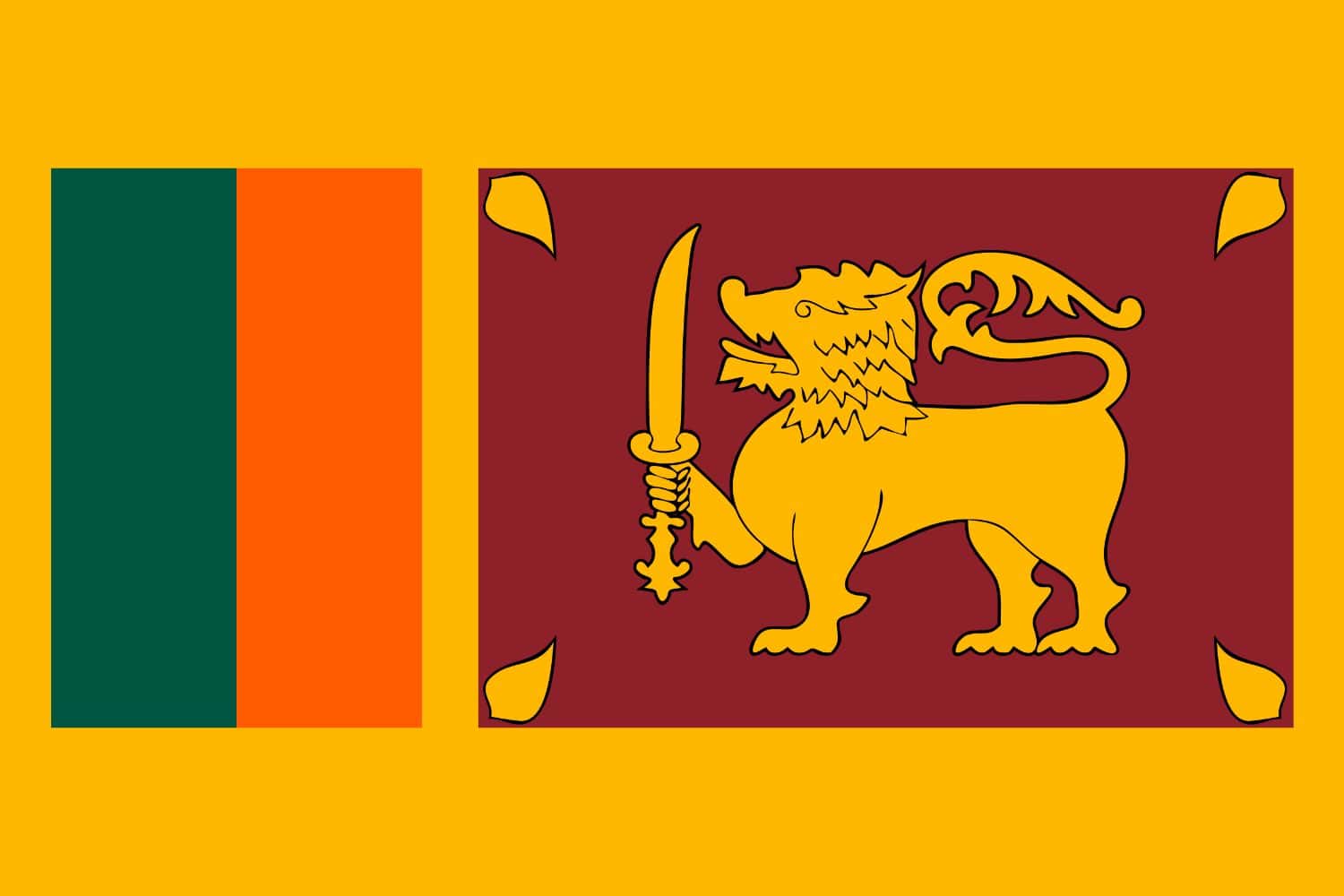
Embark on a journey of fascinating facts and lesser-known trivia about the Sri Lankan flag. Discover unique features within the flag’s design that hold hidden symbolism. Uncover stories of famous incidents or events involving the flag that have left an indelible mark on the nation’s history and identity.
Rich Tapestry of History
- 1948: The current flag of Sri Lanka was adopted on March 2, symbolizing the unity and aspirations of the Sri Lankan people.
- Colors and Symbolism: The maroon color represents the Sinhalese majority, while the orange and green stripes represent the Tamil and Muslim minority groups respectively. The golden lion and sword are emblematic of bravery and the nation’s Sinhalese roots.
- Golden Lion: The lion at the center of the flag represents the Sinhalese people, holding historical and cultural significance in Sri Lankan tradition.
- National Identity: The flag embodies Sri Lanka’s rich history, cultural heritage, and the nation’s ongoing pursuit of unity, prosperity, and renewal.
These historical facts highlight significant moments in the history of the Sri Lankan flag, showcasing its role in shaping Sri Lanka’s national identity and symbolizing its struggles and aspirations throughout the years.
Flag-Related Symbols and Emblems
A flag is not alone in representing the nation’s identity. Explore additional national symbols and emblems closely associated with Sri Lanka, understanding their significance and how they relate to the flag. Delve into their historical and cultural roots, further enriching your understanding of Sri Lanka’s heritage. It’s easy to travel and take a Sri Lankan tour to visit the country’s best destinations.
Symbolisms of the Sri Lanka Flag
The flag of Sri Lanka holds several symbolic elements that represent the nation’s history, values, and aspirations. Here are the symbolisms of the Sri Lanka flag presented in itemized form:
- Red Color: Represents bravery, valor, and the sacrifices made by the Sri Lankan people throughout history.
- Green Color: Symbolizes hope, renewal, and the fertile landscapes of Sri Lanka.
- Five-Pointed Star: Represents a significant emblem holding historical and cultural significance in Sri Lankan tradition and symbolizing unity and tradition.
- Flag’s Design: Reflects Sri Lanka’s aspirations, cultural heritage, and unity among the Sri Lankan people.
- National Identity: The flag serves as a powerful symbol that unifies the Sri Lankan people, reminding them of their shared heritage and cultural identity.
- National Aspirations: Through its design and elements, the flag embodies the aspirations and values of the Sri Lankan nation, including bravery, hope, unity, and tradition.
These symbolisms in the flag contribute to the country’s sense of identity and pride, reflecting its historical journey and cultural significance.
Flags of Similar Countries or Regions
Examining the flags of neighboring countries or regions can provide intriguing insights. Compare and contrast the flags, exploring similarities in design, colors, or symbolism. Uncover historical and cultural connections between flags, shedding light on shared influences or distinctive identities.
Sri Lankan Flag vs Indian Flag
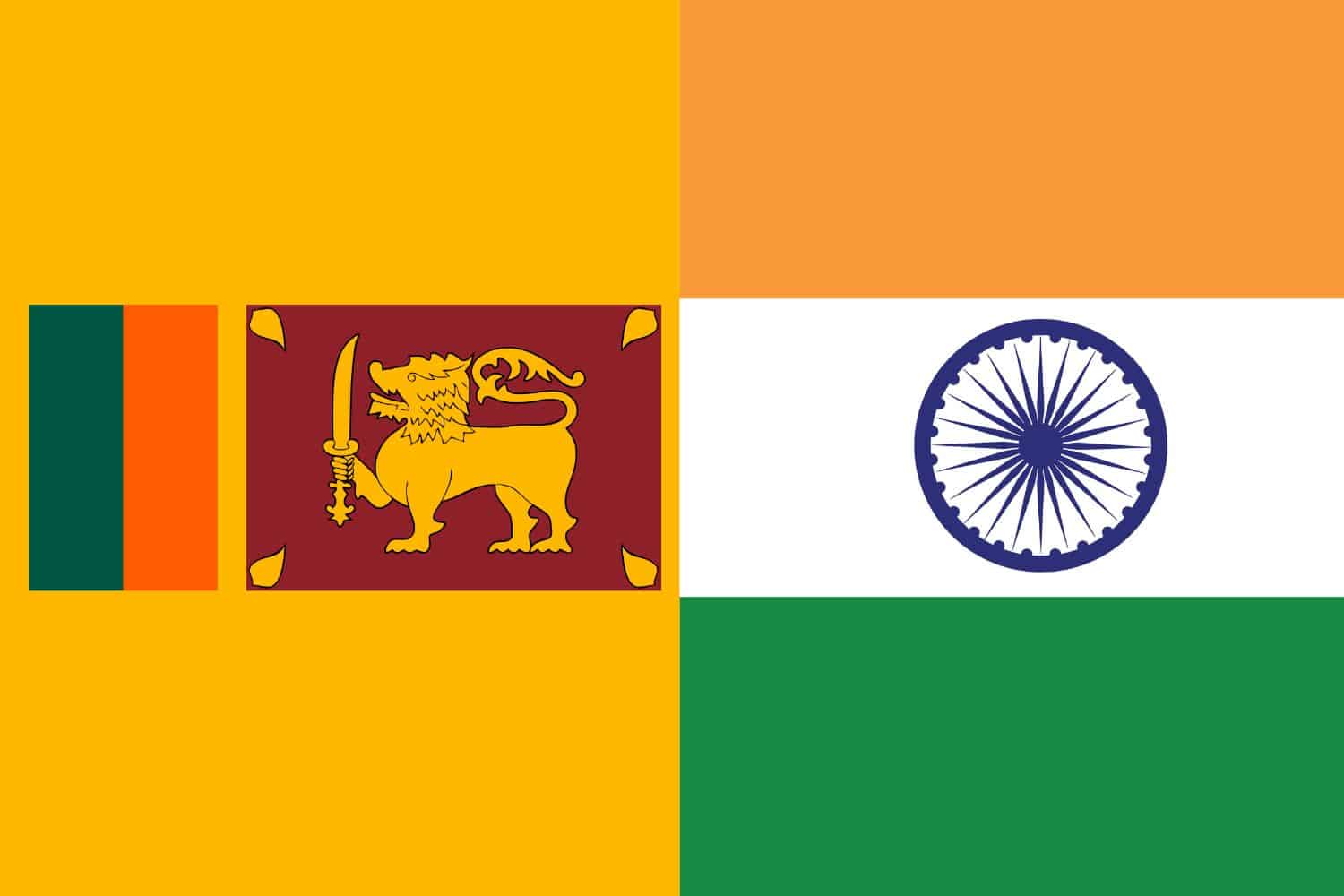
Similarity: Both flags feature the color saffron/orange.
Difference: The Indian flag consists of saffron, white, and green horizontal stripes with a navy blue Ashoka Chakra in the center of the white stripe. The Sri Lankan flag is primarily yellow and green, with a lion holding a sword in the maroon rectangle, and green and orange vertical stripes on the left.
Sri Lankan Flag vs Maldivian Flag
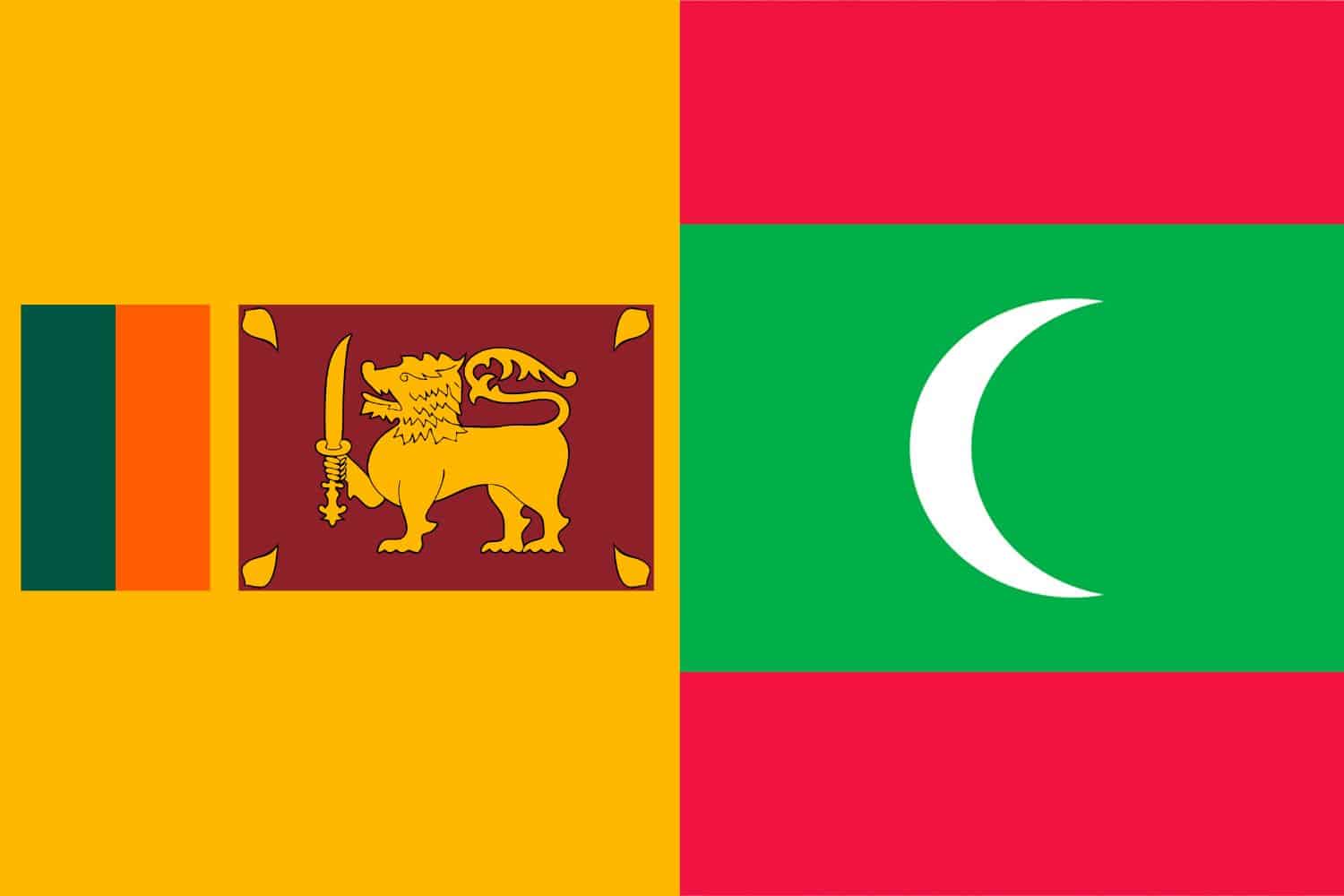
Similarity: Both flags feature green color.
Difference: The Maldivian flag is red with a large green rectangle in the center bearing a white crescent. The Sri Lankan flag is more intricate with a lion, vertical stripes, and other elements.
Sri Lankan Flag vs Bangladeshi Flag
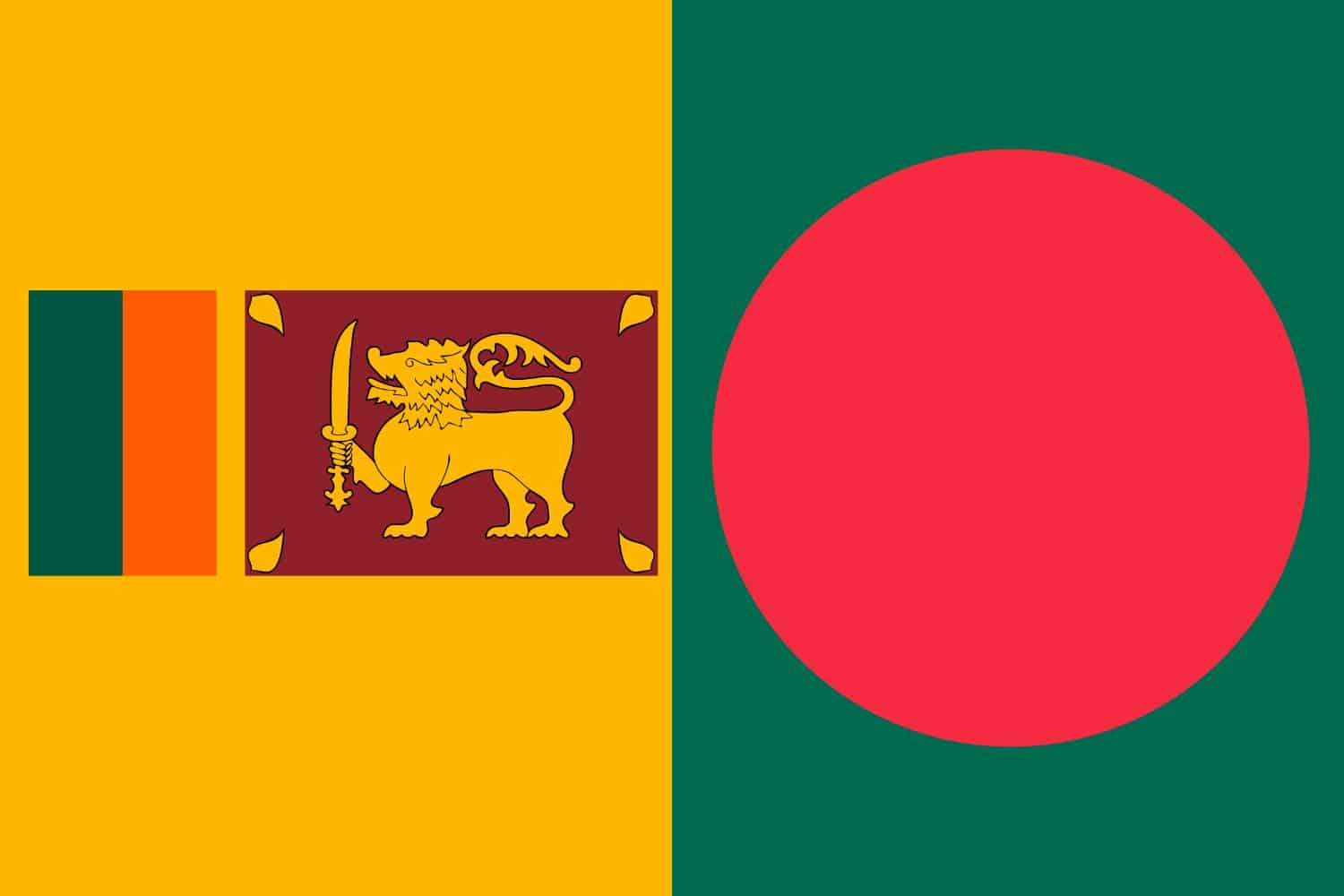
Similarity: Both flags feature green color.
Difference: The Bangladeshi flag is green with a red circle in the center. The Sri Lankan flag combines green with other colors and includes detailed symbolism.
Sri Lankan Flag vs Nepali Flag
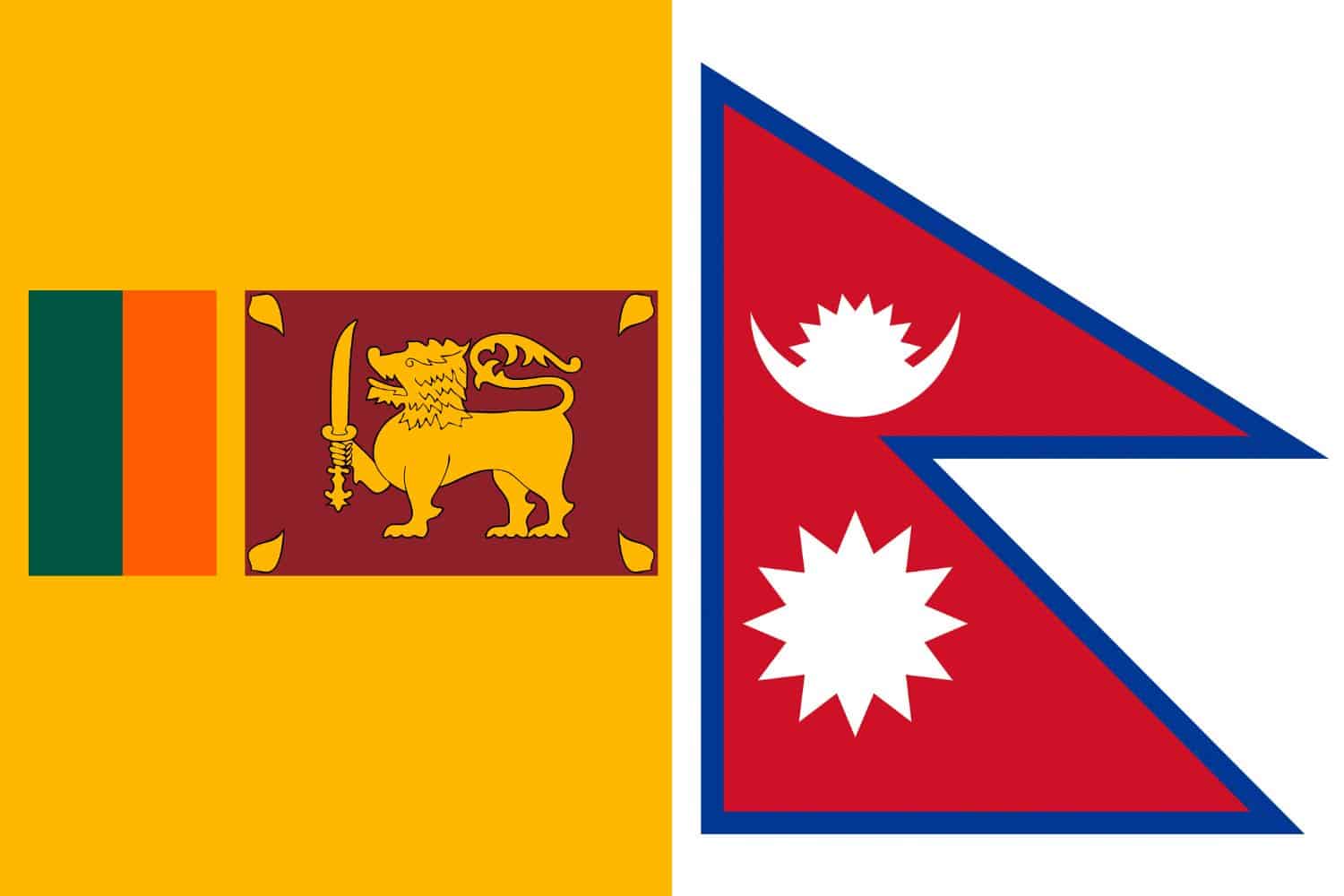
Similarity: Both flags incorporate red color.
Difference: The Nepali flag is maroon with two triangular shapes stacked upon one another, featuring a sun and moon. The Sri Lankan flag has a maroon rectangle with a lion sword and other symbols.
Sri Lankan Flag vs Pakistani Flag
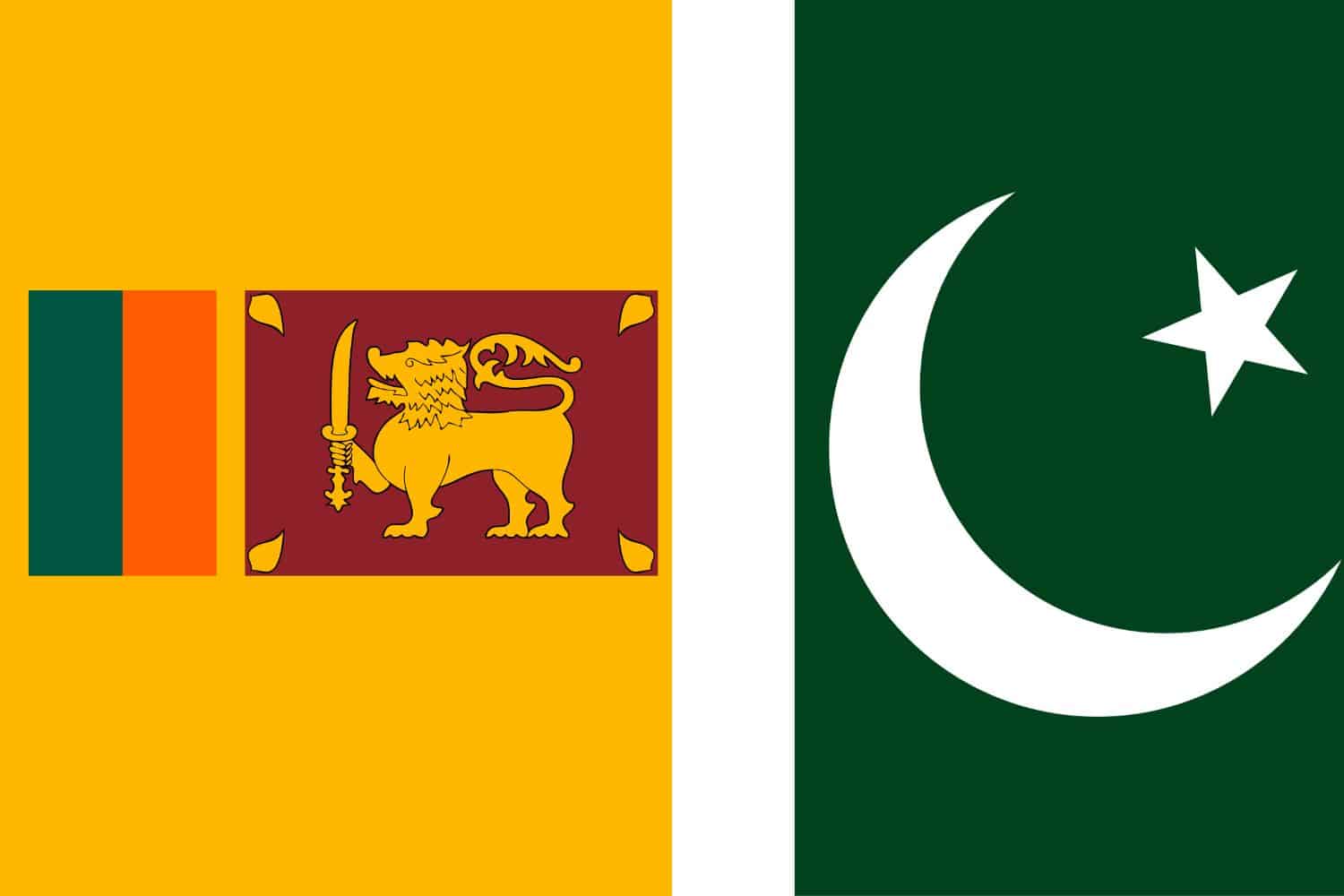
Similarity: Both flags feature green color.
Difference: The Pakistani flag has a white vertical stripe on the hoist side and a white crescent and star in the green field. The Sri Lankan flag is much more detailed with multiple colors and symbols.
Sri Lankan Flag vs Bhutanese Flag
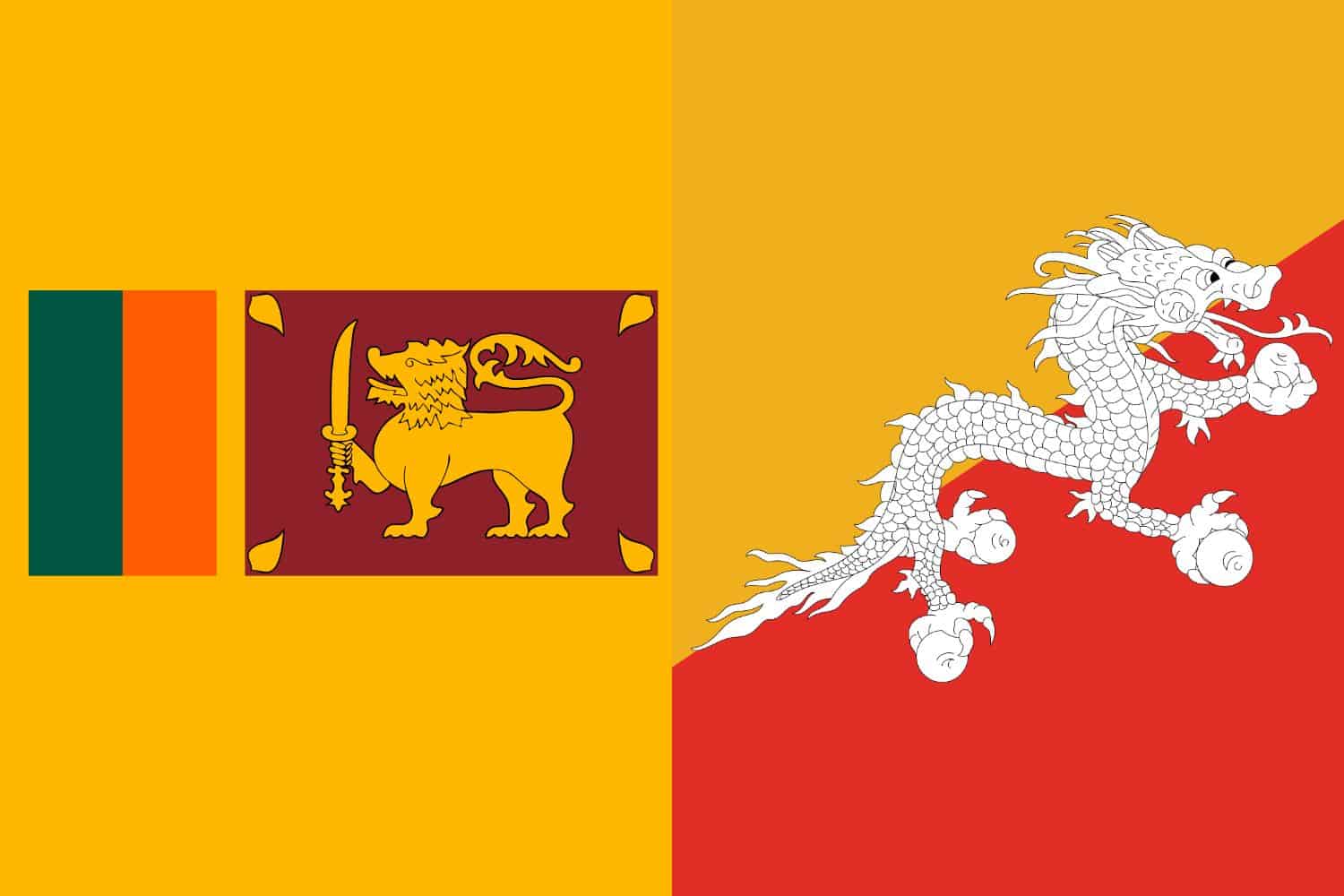
Similarity: Both flags incorporate vibrant colors.
Difference: The Bhutanese flag features a white dragon across a background divided diagonally – the top half is yellow and the bottom is orange. The Sri Lankan flag is yellow and green with a lion, stripes, and other symbols.
Frequently Asked Questions (FAQs)
Discover answers to common questions related to the Sri Lanka flag picture. From its historical origins to the symbolism behind its elements, find concise and informative responses that address inquiries commonly posed by those curious about Sri Lanka’s flag.
What does the lion on the Sri Lankan flag represent?
The lion symbolizes strength and bravery, and it is a representation of the Sinhalese, the major ethnic group in Sri Lanka.
Why are there four leaves on the corners of the flag?
The four leaves are Bo leaves, representing the four virtues of Kindness, Friendliness, Happiness, and Equanimity. They also symbolize Buddhism, the primary religion in Sri Lanka.
What do the green and saffron/orange stripes signify?
The green stripe represents the Sri Lankan Tamils, while the saffron/orange stripe stands for the Sri Lankan Moors. Both are significant ethnic groups in the country.
How old is the Sri Lankan flag?
The current design of the flag was officially adopted on May 22, 1972. However, its origins, especially the lion flag, date back to ancient Sri Lanka.
Has the design of the flag changed over the years?
Yes, minor modifications have been made. For instance, the sword of the lion was altered in 1972 to face upwards.
Why does the lion hold a sword?
The sword held by the lion symbolizes the sovereignty of the nation.
What is the significance of the maroon background behind the lion?
The maroon background represents the Sinhalese majority in Sri Lanka.
Is there a specific ratio for the flag’s dimensions?
Yes, the recommended ratio for the Sri Lankan flag is 1:2, meaning it is twice as long as it is tall.
Who designed the modern flag of Sri Lanka?
The modern flag was based on a concept by A. Sinnalebbe, a member of the committee appointed for the creation of the national flag in the lead-up to independence from British rule.
How is the flag flown during times of mourning?
During national mourning days, the flag is flown at half-mast as a sign of respect and grief.
More About Sri Lanka
[the-post-grid id=”50424″ title=”Sri Lanka Main page”]
